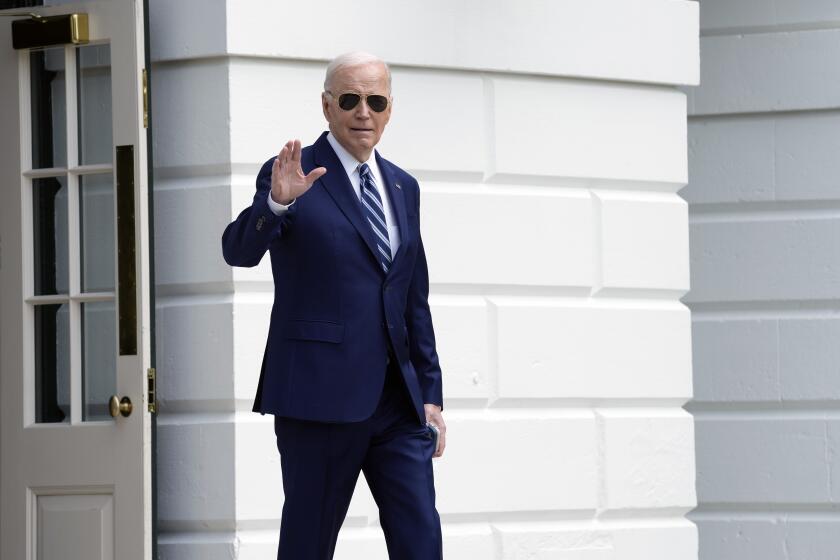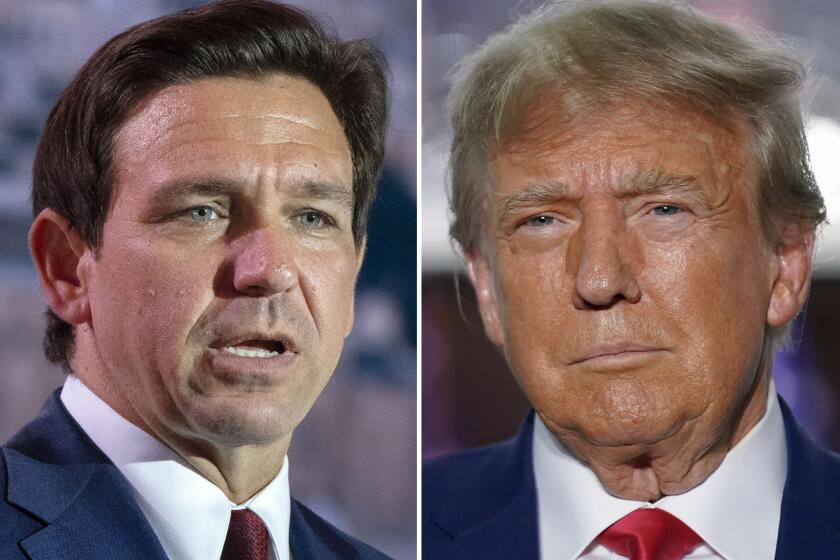Due to Dollar’s Decline, Actual Volume of Goods Exported Is Less : Japan’s Trade Surplus With U.S. Jumps to $101.4 Billion
Japan’s trade surplus leaped 65% in dollar terms to a record $101.4 billion in the fiscal year ended March 31, but the volume of the surplus is actually beginning to shrink, the Finance Ministry reported Friday.
The announcement came while Prime Minister Yasuhiro Nakasone was in Washington, seeking to soften congressional anger over Japan’s huge trade surplus with the United States.
Japanese exports are shrinking in terms of the home currency, although they are growing rapidly in dollar terms because of the dollar’s plunging value against the Japanese yen, Finance Ministry officials told reporters.
“In yen terms, the numbers don’t look nearly as awesome,” said Robert Chandross, chief economist in the New York office of London-based Lloyds Bank.
The merchandise trade surplus in the fiscal year ended March 31 was up from $61.4 billion the previous year, the ministry said.
Japan’s current account surplus--a broader measure--totaled a record $93.7 billion in the fiscal year, up from $55.0 billion. The current account measures trade in goods but also includes services and other capital transfers.
The report did not give a breakdown of trade figures by country. However, Kyodo News Service quoted unidentified Finance Ministry sources as saying the trade surplus with the United States totaled $52 billion for the fiscal year, up 20.1% from the previous year.
According to U.S. figures, the U.S. trade deficit with Japan was $58.6 billion for the 1986 calendar year, which ended three months earlier than Japan’s fiscal year, up from $49.7 billion in 1985. The two nations’ statistics often differ somewhat.
Japan’s trade surplus with Europe was $18.2 billion, up 43.3% from a year earlier, Kyodo quoted the officials as saying.
In yen terms, the overall surplus rose about 25% during the fiscal year, not 64%, Teruhiko Mano, a director of the government’s Bank of Japan, said in an interview.
The lower value of the dollar obscures changes in trading patterns, economists say. For example, if Japan sells fewer videocassette recorders to the United States, but each one costs far more in dollars, Japan’s surplus seems to Americans to be going up instead of down.
Japanese officials say the volume of Japanese exports is declining. A rising yen should also increase Japanese imports, but the economy is so sluggish that there has been little progress on that front.
The Labor Ministry said Friday that unemployment averaged a record 2.8% in fiscal 1986, up from 2.6% a year earlier, largely because of reduced export demand due to the stronger yen. It said the number employed in manufacturing fell by 270,000 during the year.
The dollar has fallen to about 140 yen from 260 yen at its recent peak in February, 1985, and 242 yen in September, 1985, when major countries agreed to seek a lower dollar to ease the U.S. trade deficit.
Nakasone told President Reagan in Washington on Thursday that Japan would reduce short-term interest rates to spur demand for loans and thus increase consumption. He also outlined a package of measures to stimulate the economy.
The ministry report said cheaper oil prices in fiscal 1986 were a major factor in pushing up Japan’s surplus.
More to Read
Start your day right
Sign up for Essential California for news, features and recommendations from the L.A. Times and beyond in your inbox six days a week.
You may occasionally receive promotional content from the Los Angeles Times.






